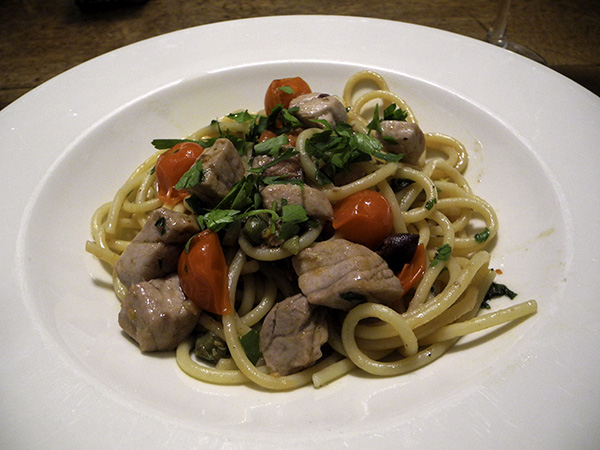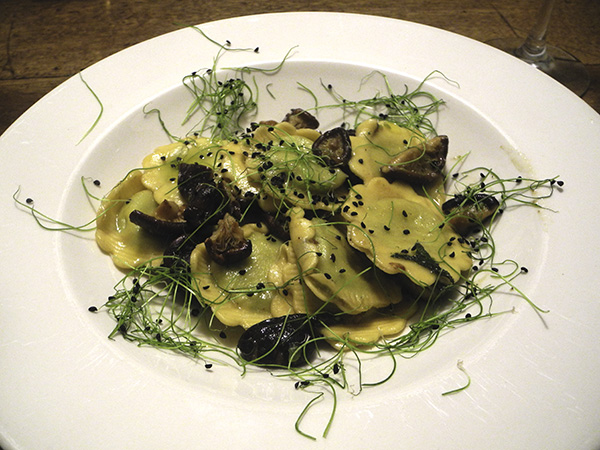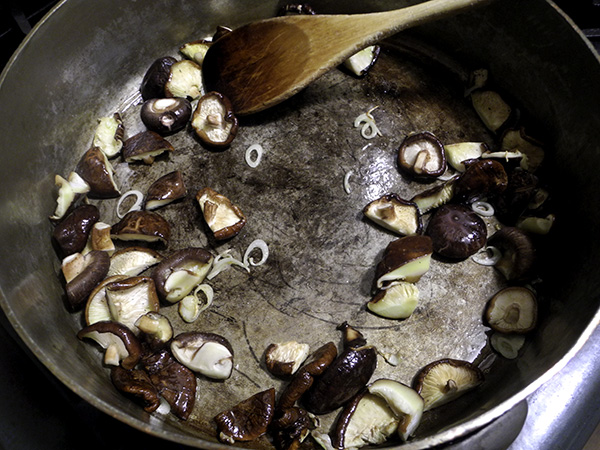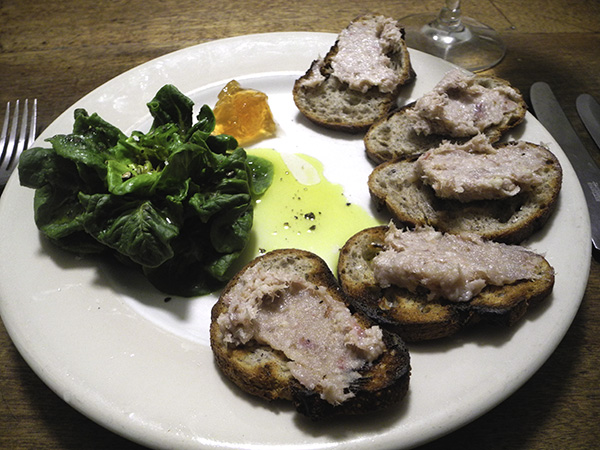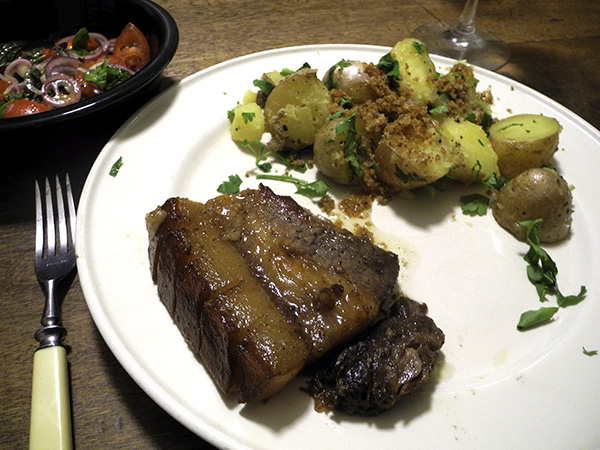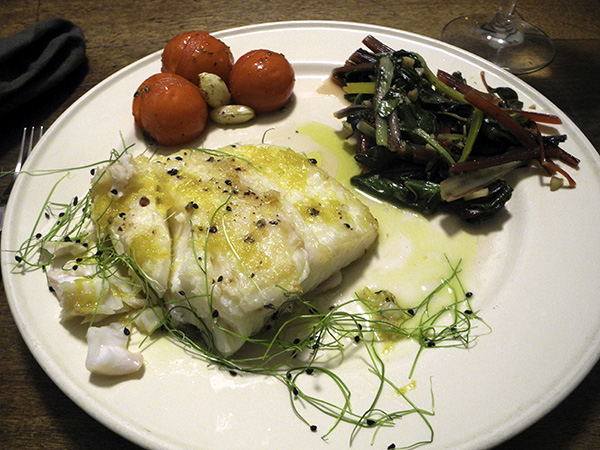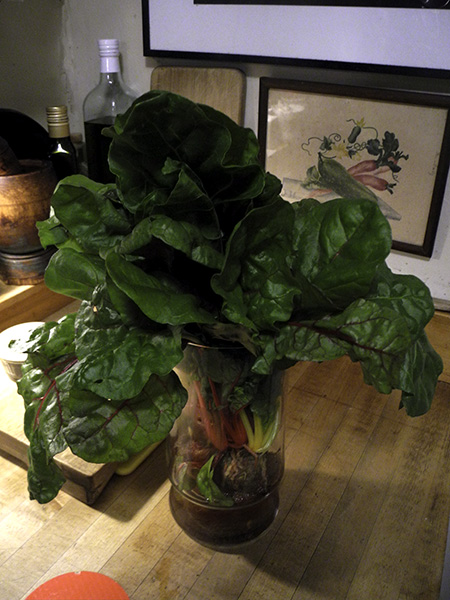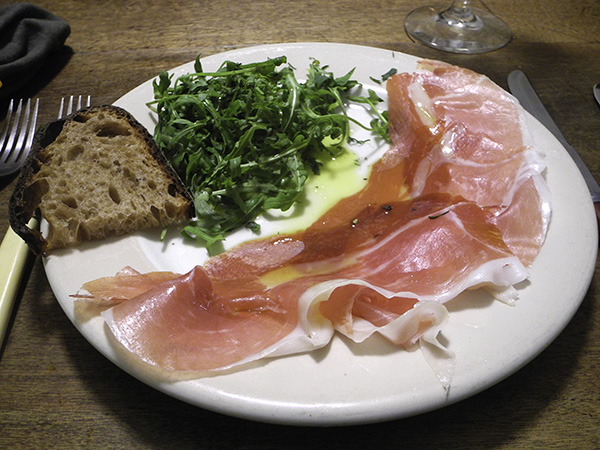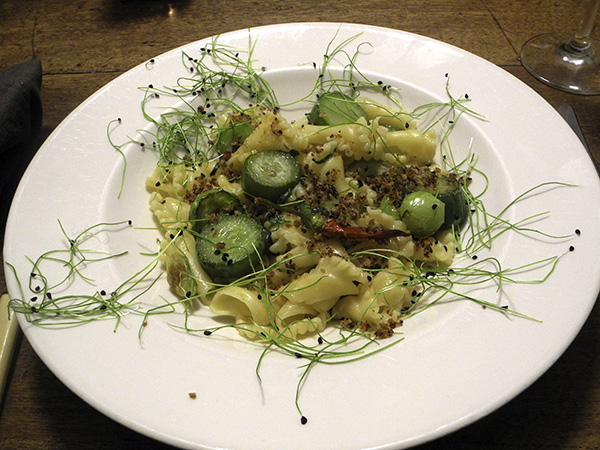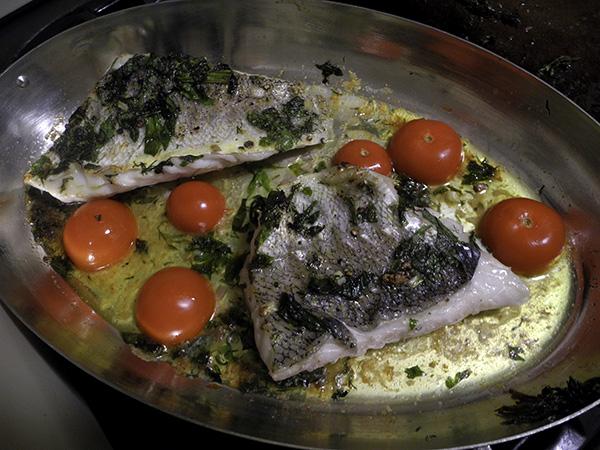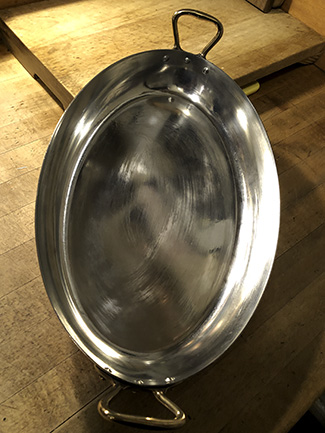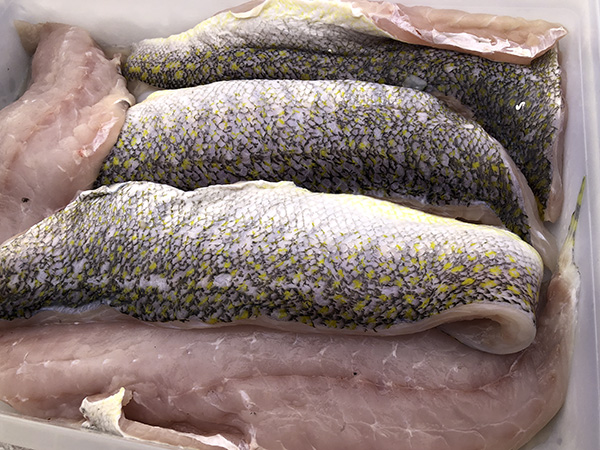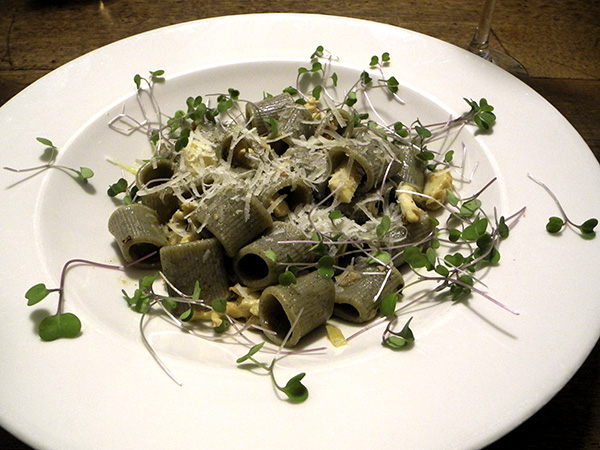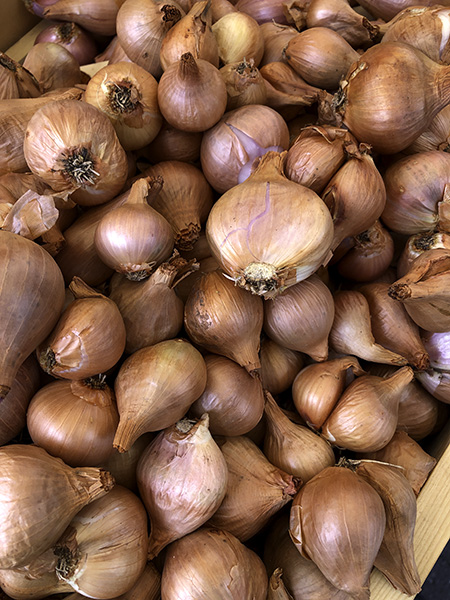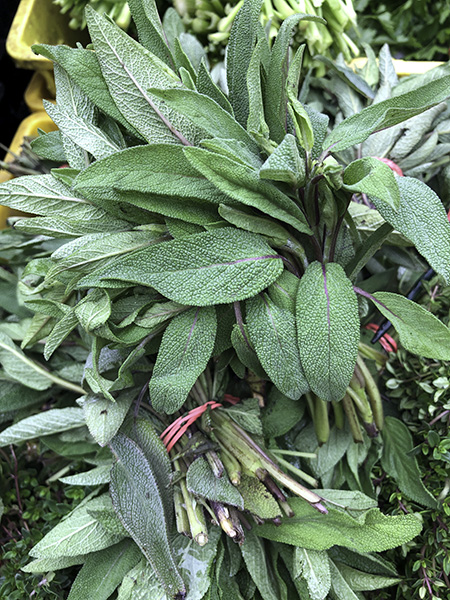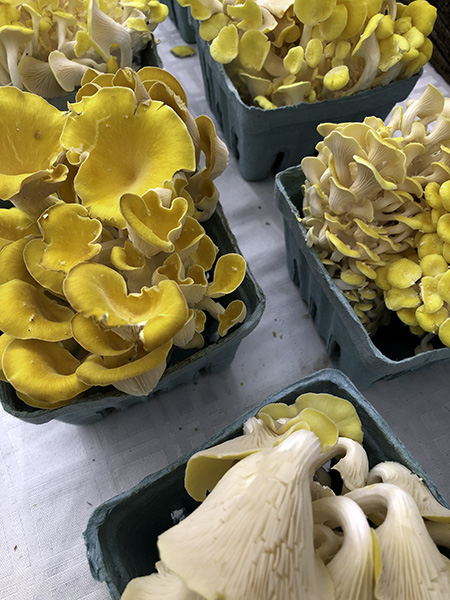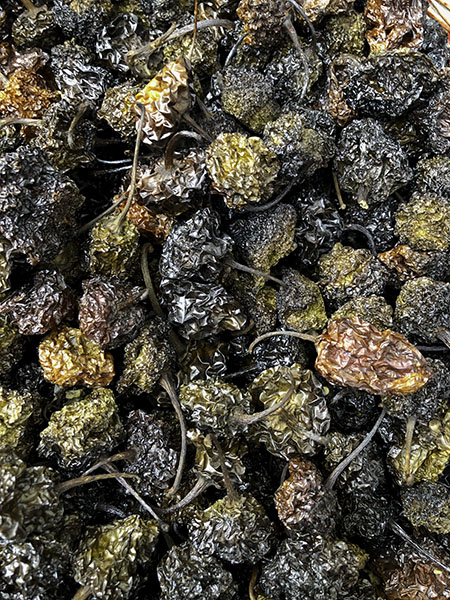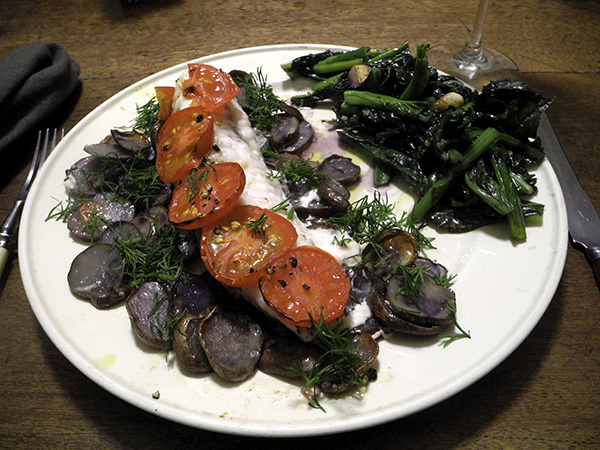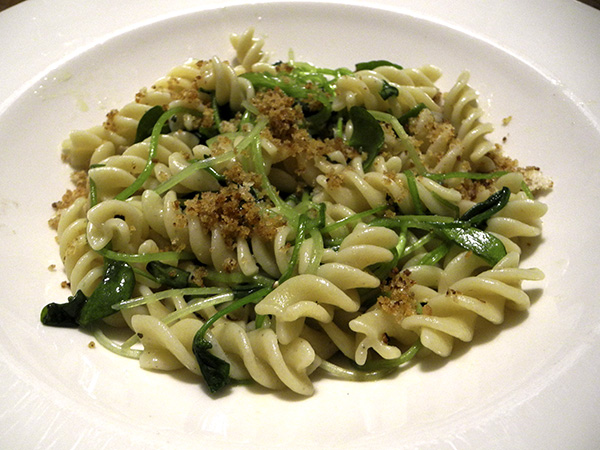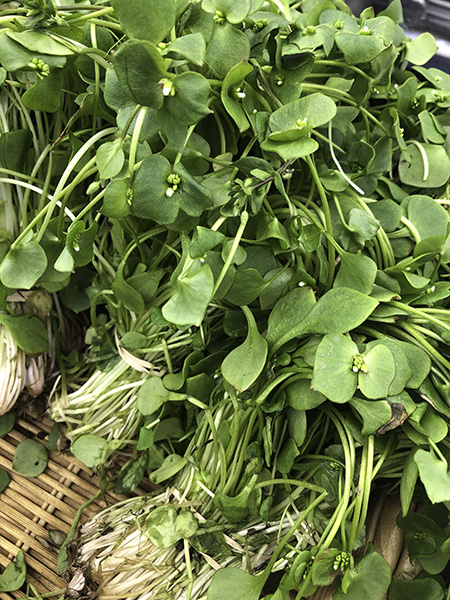
Four whole butterfish, enough to serve as an entrée for both of us, set me back all of $1.85 at the Union Square Greenmarket yesterday. I knew they would be cheap; they always are, but I was still shocked when I saw the amount written on the bag. I told Delores, the fisherman’s wife, preparer of the superb seafood items they sell along with the catches themselves, and their acting cashier on busy Saturdays, that there must be a mistake, that there were 4 whole fish inside. Nonplussed, but only until for a moment, she replied: “They’re butterfish, right?”
They were butterfish, and they were, very right. The catch (no pun intended) was that they hadn’t been cleaned, so some of the value added was mine, but that operation took a very few minutes and required no skill whatsoever.
They were also very very beautiful, at every step in the process of their preparation. At the time I moved to the east coast from the Midwest (well, via Germany) over half a century back, I did not know that I would end up living at the edge of an ocean with fish designed to look as spectacular as these.

There was a first course, partly because it was a holiday: We were celebrating one of our anniversaries: We had met exactly 28 years before. We had Delores’ smoked seafood salad, or pâté, and it was every bit as delicious as I remembered.

- a composed smoked fish salad, or pâté, using local fish caught by Phil Karlin of P.E. & D.D. Seafood Company, whose wife, Dolores actually made it, consisting of more than one kind of white fish, smoked; mayonnaise; red onion; and celery (the salad was perfectly seasoned), served on slices of a rich, moist loaf of a fantastic ‘beet rye’ from Philadelphia’s Lost Bread Co. that had just been toasted over an open gas flame on our ‘Camp-A-Toaster’ seconds before


- two tiny heads of gem lettuce from Tamarack Hollow Farm, their roots snipped off and the leaves pressed down to almost resemble rosettes, dressed with a little unfiltered olive oil from the 6th Avenue Trader Joe’s, Maldon sea salt, freshly ground black pepper, and a bit juice from an organic Chelsea Whole Foods Market lemon
- the wine was a California sparkling rosé, Keith Hock California Sparkling Rose 2016, from Naked Wines
I was able to assemble and set up almost everything I needed to cook the main course before we sat down to the appetizer, and the cooking itself was brief and pretty straightforward.

- four 5-ounce whole butterfish from P.E. & D.D. Seafood, cleaned at home (the heads cut off, making it very easy, then the dorsal and ventral fins cut off with a kitchen shears), rinsed, drained, dried, 2 deep cross cuts made to each side before they were brushed with a mixture of olive oil, most of the zest and some of the juice from an organic Whole Foods Market lemon, chopped parsley from Phillips Farms, and some crushed dried red shishito pepper (with no heat) purchased from Lani’s Farm last fall, seasoned with sea salt and freshly-ground black pepper on both sides, dusted lightly with a local Greenmarket-purchased whole wheat flour from The Blew family of Oak Grove Plantation in Pittstown, N.J., placed in 3 or 4 tablespoons of a combination of olive oil and butter inside a large (13″) well-seasoned cast iron pan that had been allowed to get very hot, the heat then turned down to low and the fish sautéed for about 3 or 4 minutes each side, by which tie they had turned a crispy golden brown and been cooked through, arranged on 2 plates and sprinkled with more, (fresh) chopped parsley

- three Backyard Farms Maine ‘cocktail tomatoes’ from Chelsea Whole Foods, halved, heated in a little olive oil inside a small vintage Corning Pyrex Flameware blue-glass skillet, seasoned with salt and pepper, tossed with a pinch of dry organic wild fennel pollen from Buon Italia and arranged on the plates next to the fish

- one bunch of collard greens from Migliorelli Farm, the stems removed from the larger leaves, the larger leaves torn into smaller sections, washed 3 times, drained (some of the water retained and held aside to be added, as necessary, near the end of the time the greens were cooking), braised gently until barely softened or wilted inside a large, antique copper pot in which 2 cloves of halved garlic from Foragers Market had first been heated until they had softened, seasoned with salt and black pepper, finished with a small drizzle of olive oil
- the wine was a Portuguese (Vinho Verde) rosé, Phaunus Amphora Palhete Rosé 2016, a wine from a pretty extraordinary tradition
